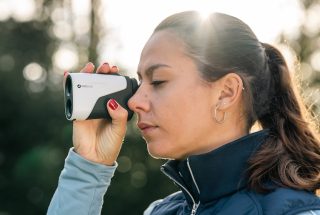LISTEN HERE:
Aim bias is a leading cause of poor or inconsistent putting. Today we’re going to take a deep dive into the topic and what you can do to correct your aim, and ultimately putt better.
Back in the mid-2000’s, we partnered with Campbell University and we performed a study about how golfers of all levels aim their putter. We found that only 3% of all golfers actually aim their putter correctly. We also found that golfers who had a certain loft at a certain height, put the truest roll on the ball.
When we talk about aim, there are different types of aim.
Static aim is determined by doing a laser test to see where the putter face is aimed.
Effective aim, on the other hand, is the process of static aim. In other words, effective aim is the player’s perception of what they do with static aim.
Target aim simply refers to how well a golfer aims the putter at the target.
Lastly, there’s bio aim which ties into what we do as golfers to physically get the putter aimed where we think it should be. A great example is considering how a golfer grips their putter. Is their grip too strong or too weak? These factors are extremely important in understanding the whole process of putter aim.
Through extensive research, we’ve found that aim is far more important than the path of the stroke. The best putters might have flaws in their stroke but at impact, they’re able to consistently return the putter face to where it was aimed at address.
To that end, the whole goal of our fitting process is to fix the processes each individual golfer takes to aim their putter. In essence, we want to build a putter around someone’s unique perceptive system with regard to aim.
Our good friend Mark Sweeney recently crunched the numbers to find out what stat most greatly affected the scores of tour players. It was total putts. This all starts with aiming the putter correctly. The fitters at Edel Golf are the best in the industry, bar none.
Today, Dylan wants to know if a golfer’s perception of aiming straight can change over time. The answer is yes.
The most common factor is changes in our eyesight over time. Additionally, if someone changes putters, their perceptive aim is going to change because the putter looks different. If a golfer changes their grip, the weight of their putter, or employs a new style or technique, their perceptive aim is going to change too.
At the end of the day, putting well starts with aiming consistently. The key is having a precise routine of finding the right aim and adhering to it despite all of the outside noise and ideas.
For a more in-depth look about the different kinds of aim and how they affect your ability to make putts, give the podcast above a listen.




